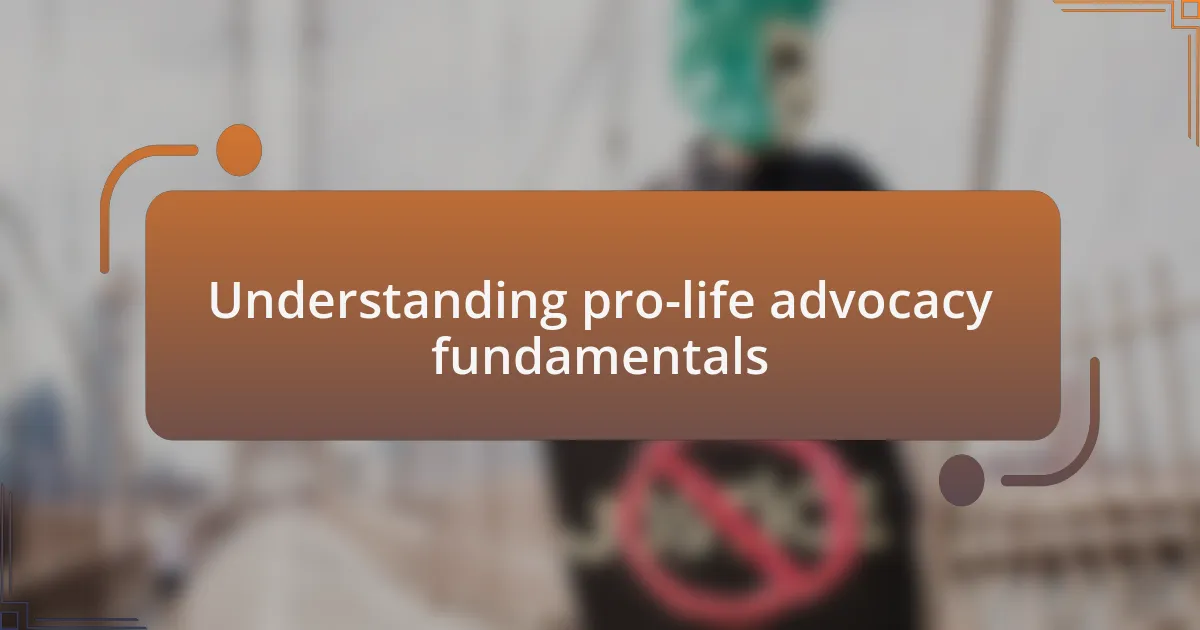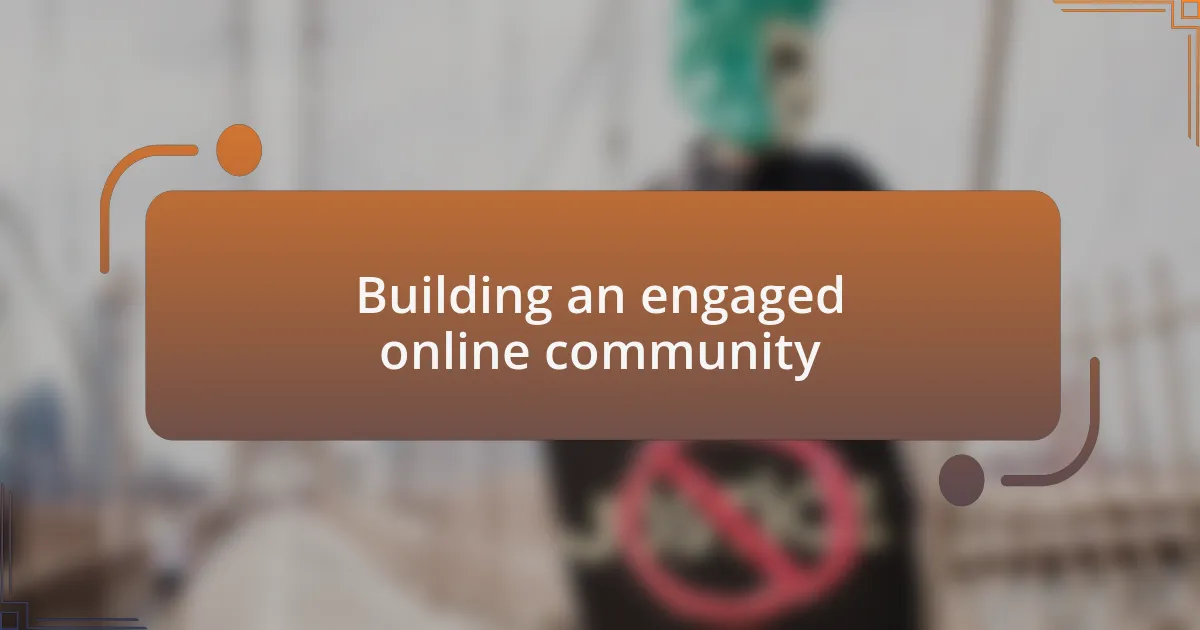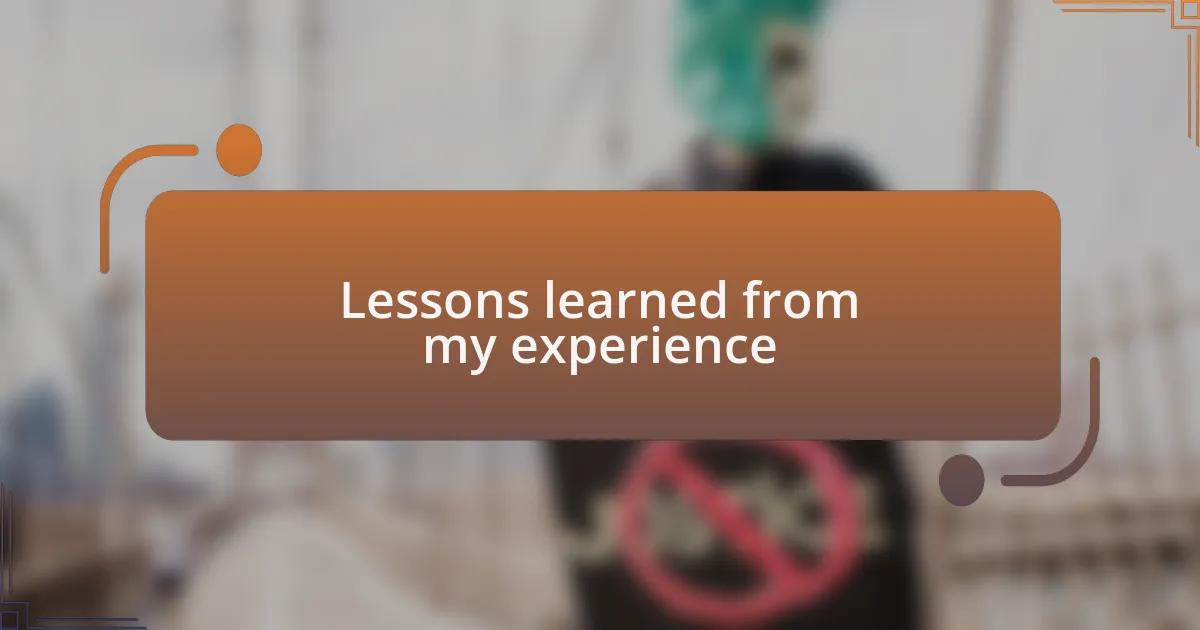Key takeaways:
- Pro-life advocacy emphasizes the intrinsic value of every human life and the importance of sharing personal stories to create understanding and compassion.
- Building an engaged online community involves fostering connections, being responsive, and encouraging open dialogue among members.
- Authenticity and vulnerability in messaging promote trust and deeper conversations within the community.
- Adapting content based on community feedback enhances engagement and enriches the overall experience for members.

Understanding pro-life advocacy fundamentals
Pro-life advocacy is centered around the belief that every human life, from conception to natural death, has inherent value. I remember the first time I encountered a poignant story about a woman who chose life despite facing immense challenges. It struck me—how many lives could be touched when we share such powerful narratives? This is why stories are fundamental; they humanize the issue and resonate deeply with our audience.
A critical aspect of pro-life advocacy is education, as misconceptions abound about what it entails. Often, I find myself asking, “Have we taken the time to truly understand the reasons behind someone’s choice?” It’s essential to create spaces for dialogue, where differing opinions can be expressed. This not only strengthens our position but also fosters compassion, bridging gaps that might otherwise divide us.
Moreover, advocacy isn’t just about the act of speaking out—it’s about community engagement. I vividly recall hosting a local event where individuals shared their experiences related to unplanned pregnancies. The stories revealed a tapestry of hope and struggle, emphasizing that support and understanding can empower individuals to choose life. How powerful it is to realize that advocacy can cultivate a supportive community centered around love and respect for all lives!

Building an engaged online community
Engaging an online community requires fostering genuine connections among members. I remember launching a Facebook group dedicated to pro-life discussions. At first, it felt like a small conversation between friends, but as more people started sharing their stories and questions, I was amazed by how our collective journey unfolded. Each post became a thread in a larger narrative, weaving a supportive network that empowered individuals to express their thoughts without fear of judgment.
As we navigated various topics, I noticed that using interactive content, like polls and live Q&A sessions, actively brought people together. One day, during a live chat, someone shared a deeply personal story of facing an unplanned pregnancy, and the response was overwhelming. It struck me how an online community could offer immediate support and understanding, creating a safe space for vulnerability that many might not find in their offline lives.
Building engagement also means being responsive and present. I dedicated time each week to interact with comments and messages, which made a noticeable difference. I often asked questions like, “What resources do you wish you had during your journey?” This not only drew out insightful answers but also made community members feel valued and heard. In my experience, when people know their voices matter, they are much more likely to stay engaged and invested in the community overall.

Lessons learned from my experience
One of the most profound lessons I’ve learned is the power of authenticity in messaging. Early on, I experimented with a variety of posts—from informative articles to personal reflections. I remember a post where I shared my own struggles with understanding pro-life views, and the raw honesty resonated with many. It made me realize that vulnerability can spark deep conversations and connections, allowing others to share their experiences in return. Isn’t it incredible how being open can foster trust?
Another key takeaway has been the necessity of consistent engagement. I’ve learned that simply posting content isn’t enough; you have to truly be involved. During a particularly heated debate in our group, I decided to step in and share my perspective while encouraging others to voice theirs. What surprised me was not just the quantity of responses but how heartfelt each one was. It taught me that when leaders show up, it inspires others to be more present as well.
Lastly, I’ve discovered the importance of adapting based on feedback. I recall a time when our community expressed a desire for more educational resources. Rather than sticking to my original content plan, I organized a series of informative webinars that addressed their needs directly. This experience has shown me that listening and evolving based on the audience’s interests not only strengthens engagement but also enriches the entire community experience. Have you noticed how responsive practices can change the dynamics of any group? They truly do!